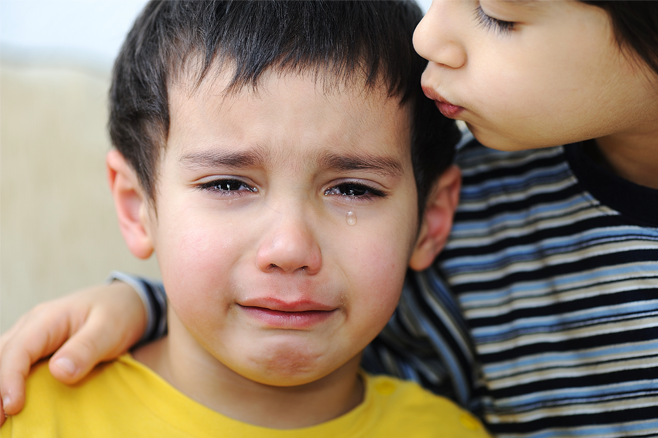I want to take a moment to acknowledge the grief, loss, pain and trauma experienced by so many over the past two years – it is impossible for me to put its severity and intensity into words. Many of us have experienced our own personal adversity and as child caring practitioners in various settings, we have been witnesses to the impact of the pandemic, racial and political tensions and more recently the war in Ukraine. We see firsthand how the events of the past years have affected children, families, our colleagues and the places where we live and work. However, the past years have also highlighted the resilience of the human spirit. We have seen friends, families, schools, organizations and communities coming together to support one another during this challenging time.
While this article will present the impact the experiences of trauma, fear and isolation have had on children, families and communities, it will also focus on resilience. For years, Starr training offerings have reinforced the importance of refraining from keeping those who have experienced trauma stuck in victim thinking. Trauma-informed work means to understand adversity is part of someone, but not all of someone. It means that, yes, we acknowledge how the things that have happened affect individuals emotionally, behaviorally and cognitively. However, this work reinforces the importance of learning what people need to feel supported and utilizing interventions that support their strengths and resilience. Starr strives to teach child caring practitioners how to facilitate the movement of individuals who are at risk for or who have experienced trauma to view themselves not as victims but as survivors.
The experience of trauma is one of fearing for one’s safety, for survival – or the safety and survival of someone you love. The experience of trauma is one of not having control over your situation, feeling stuck. The experience of trauma happens when stress is chronic, when it is prolonged and exaggerated.
It is safe to say this has been the experience of our children, and ourselves, for over 2 years.
Given the staggering number of COVID-related deaths, we are now facing a silent pandemic of grief, which will have a lifelong impact on the many children who have lost a loved one to death from COVID.
According to several new reports, COVID-19 has had a negative impact on mental well-being for 70% of Americans. Major Depressive Disorder diagnoses have risen by 28% and the prevalence of anxiety disorders rose by 26% from January 2020 to January 2021. Alcohol and drug use has increased. When the mental health of our adults struggles, the impact on our children is severe. The Hospital Association reported in just the first half of 2021, children’s hospitals had a 45% increase in the number of cases of self-injury and suicide in children ages 5 – 17 than during the same period in 2019. COVID continues to have a disproportionate impact on children and adults of color.
In 2021 The American Academy of Pediatrics (AAP), the American Academy of Child and Adolescent Psychiatry (AACAP) and the Children’s Hospital Association (CHA) declared a national emergency in child and adolescent mental health. Reports about the supply of mental health therapists according to an analysis by the Health Resources and Services Administration say that the United States needs a population to provider ratio of 30,000 to 1 and is coming up short by over 6,000 providers. There is a system design issue and over 1/3 of Americans live in areas lacking mental health professionals. This means all adults matter – all child caring adults must be trauma-informed and resilience focused, not just our mental health professionals.
Symptoms and reactions we are seeing in our children
- Easily startled.
- Anxious.
- Cry easily. Depressed mood. Lonely.
- Sensitive to sounds, sights and senses of touch.
- Difficulty remembering things. Challenges with learning.
- Behavior might be hard to regulate. Fighting, acting out.
- Trouble “using their words”.
- Somatic complaints. Headaches and stomachaches.
Trauma and stress symptoms and reactions are often mistaken for other mental health disorders. This is because the overlap in symptomology is significant. Hypervigilance and hyperactivity can look like ADHD. Worry and fear can look like anxiety. Loneliness can look like depression. Fighting and acting out can look like oppositional defiant disorder.
How do we address the grief and trauma of COVID-19 and other world events?
Ask yourselves:
- What has happened or what is happening that is affecting this child right now?
- How can I best support this child?
- What is going well for this child?
- How can I build upon this child’s strengths and resiliency?
Ask children:
- Since all of this happened, what is your biggest worry?
- Who is taking care of you?
- How is everyone in your family doing?
- Is there anything good that has come out of this experience?
- What things or people have helped you get through this experience?
- Is there anything you need or that I could do to help you feel even a little bit better?
Resilience is the ability to bounce-back, to recover from difficulty and to achieve well-being in all areas of life – despite adversity. A child can develop coping skills that support resilience developed at any age. Most children do not know how resilient they are. Believe in them and tell them that they are – with lots of support!
The following are the key experiences children need to nurture and build their resilience.
- Connections and a sense of belonging. Children need to feel connected to their families, schools and communities. They need to feel like they matter and like they belong.
- High expectations and high support. Children can meet their potential when given the support they need. Just as we wrap-around children when they have difficulty reading, we must do the same to support their behavior and emotional regulation.
- Emotional awareness and regulation. Children need adults to help them notice their feelings and their emotions and they need adults to help them regulate those feelings and emotions. We can’t expect them to do it on their own.
- Feeling valuable. Children must feel like they have something to offer the world – like they make a difference and can help by using their own strengths and talents.
Connections
- Get to know children, be curious
- Cultivate a sense of belonging and community
- 5:1 interactions (for every one redirection or correction, provide at least 5 positive interactions)
- Time “in” and co-regulation
- Check-in & check-out
- Virtual and in person clubs, youth groups, sports, classes and opportunities to be with other children
- Phone calls home to parents & caregivers – good news
- Buddy systems and peer-to-peer opportunities
High Expectations and loads of support
- You can keep expectations high. You just need to ask, what does the child need to meet their potential? Many children need support to get there.
- Provide scaffolding to children who require help. If a child cannot reach something from a high shelf, you might lift them up, or offer them a stool. The same is true in helping them obtain skills in academics, behavior and emotional regulation.
- You cannot try something once and expect it to work!
- Support and teaching must be ongoing. Repetition works!
Emotional awareness and regulation
- Children feel empowered when they have control of their own emotions, behavior and learning – not that it is perfect, but they can regulate things if they feel overwhelmed.
- Teach and practice coping strategies such as breathing, movement, creative expressive and journaling.
- Co-regulation means you help the children regulate instead of asking them to figure out how to regulate on their own.
Feeling valuable
- Service-learning projects
- Children in helper role (jobs, chores, offer advice)
- Letters, drawings, postcards to parents, neighbors, senior centers, healthcare workers, other schools etc.
- Penny drive, can drive
- Car wash
In these past years, we and witnessed amazing people – many children – doing extraordinary things in their families, schools and communities – despite their experiences of adversity. We have seen children and adults rising to the occasion to use their strengths and their resilience during a time of great stress and heartache. Children shine when they feel connected, like they belong, when they are supported and feel like they are good at something, when they can regulate their emotions and behavior, and when they feel valuable, as they have something to offer others.


